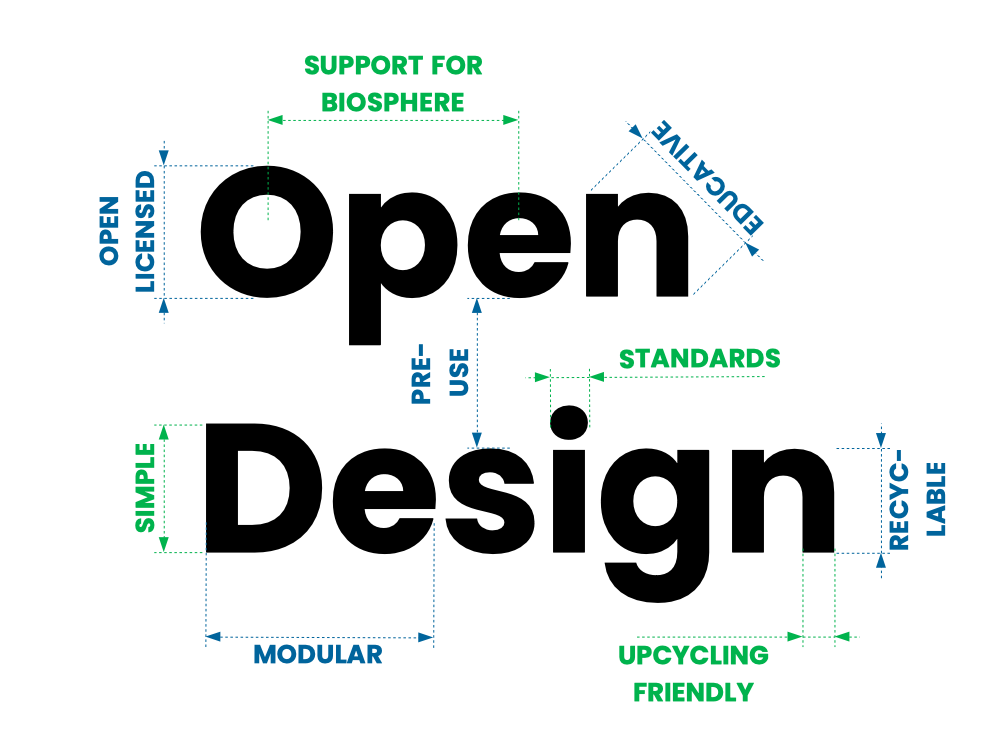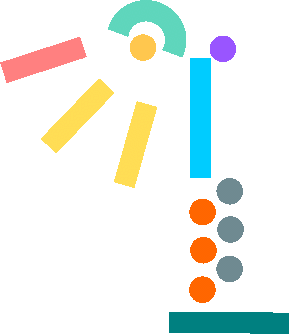Log
- C:Lab @Buro Happold
- Open Hardware Entreprenuership @Hochschule Heilbronn
Link
opencircularity.info/osce
[ o°]
*
Open Source
*
A quick look at the definition of open source hardware.
*
”Open Source Hardware …
is hardware whose design is made publicly available so that anyone can study, modify, distribute, make, and sell the design or hardware based on that design.
*
↑ The highlighted words are the 4 freedoms of Open Source. And look. It is verbs. It is about doing things. Or about enabling people to do practical creative things with objects.
*
Circular Economy
*
Let’s ask Wikipedia for a quick definition:
*
“Circular systems…
employ reuse, sharing, repair, refurbishment, remanufacturing and recycling to create a closed-loop system.”
*
↑ The highlighted words are also verbs! The circular economy is about doing things with things – differently! it wants to enable people to do all kinds of practical things with objects.
So. Like Open Source it is an idea about human interaction with products. The question is, how close are they?
Question → Look at the juxtaposition of the Open Source actions and the Circular Economy actions. Do you see where they are the same, where they support or complement each other? Can you draw connections?
(…)
*
Open Source
study
modify
distribute
make
sell
Circular Economy
reuse
sharing
repair
refurbishment
remanufacturing
recycling
*
↑
Ok. That is pretty interesting.
It looks like at least theoretically they can support and elevate each other!
But what about design? If you have heard about the circular economy you know that it is mostly about HOW to design things. The design of a product can make circular practices such as repair or recycling easy or impossible.
The question is: Does open hardware has anything to say about how a design should be made too? Yes. It has!
If you read on in the the definition of open source hardware you’ll find this:
*
”… Ideally, open source hardware uses readily-available components and materials, standard processes, open infrastructure, unrestricted content, and open-source design tools to maximize the ability of individuals to make and use hardware.”
*
What is this? It is design guidelines that want to make it as easy as possible to physically recreate a hardware object in different locations. Because if open hardware want’s to leverage some of the things that make open source software so great and successful it needs to be easy to manufacture on sight. Software you download install and run. But hardware?
*
This is how ’shipping‘ software works, but not hardware.

*
Here is → an extended list of differences between hardware and software. If you are excited about open hardware and the idea to make it as big as open source software the list will make you pretty humble. It shows why it is hard for open hardware to activate the same effects that make open source software work so well. And this is mostly because software is a file that is easy to copy. Hardware is not.
So open hardware ideally makes an effort in the design to be easy to make. Make the translation into atoms quick, cheap and easy.
The question is: Are things that are easy and cheap to make also easy to repair, reuse, refurbish and recycle? Do the design ideals open hardware and design ideals of circularity have anything to say to each other?
Let’s compare them?
Question → Look at the juxtaposition of the Open Source Hardware and the Circular Economy design recommendations. Do you see examples where they are the same, where they support or complement each other?
//
Open Source
Design …
with
readily-available components and materials
standard processes
open infrastructure
unrestricted content
open-source design tools
Circular Economy
Design…
for
standardization & compatibility
ease of maintenance & repair
upgradability & adaptability
dis- and reassembly
recycling
local materials
simple
modular
product attachment & trust
durability
(6 of those were taken from Conny Bakkers Book “Products that last”)
*
Yes. If you look careful into this you’ll see that in some parts they basically ask for the same thing and in other parts they complement and potentially elevate each other – give each other hints how to achieve their design ideals even better.
*
What does this mean?
It could mean, that when you combine the worlds of open source hardware and circular economy to an “open source circular economy” you might end up with design objects that are more open than the open hardware definition is able to describe right now and more circular than the current status of our circular design principles is able to describe right now.
At least in theory – on this level of abstraction.
*
More depth please …
More hands on …
*
But I am a designer. I like theory. But enjoy hands on stuff too.
So starting from the level of abstraction above our design studio → Mifactori – explores the combination of Open Source and Circularity for many years now. And we were always looking for descriptions that had the “open source circular economy” idea in its core but where a bit more instructive for real hands on design work.
And we ended up with an article and 9 strategies. How to make Open Circular Design? If we still have time, I can go through them and show examples. If not, I invite you to read the article and click through the design examples on our website.
*
Visual from our article: What Is Open Circular Design?
*
Surviving…
.
.
… climate change? Which city is smarter? The „smart city“ with street lights that are technically sophisticated and networked? Or the city with open documented, accessible, easy to understand street lights? When a storm hits the city infrastructure – which lamps are easier to repair locally? When the coastline moves – which lamps are easier to dismantle, take away and put up in another region? Openness helps us to adapt!
→ This is why we study Open Hardware (Business Models) and Design for Open Source in this course.
*
Thank you
I look forward to the discussion. You can find and follow my and Mifactori’s work here
The Open Circularity Newsletter ヽ(^.^)ノ
@mifactori on Twitch (Streams every Wednesday when the Pandemic eases down)
*
one more time the link to this page:
opencircularity.info/osce
*

